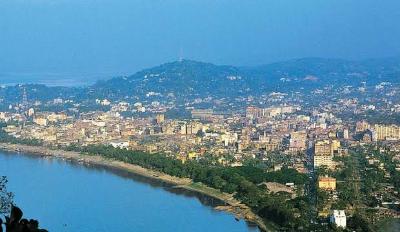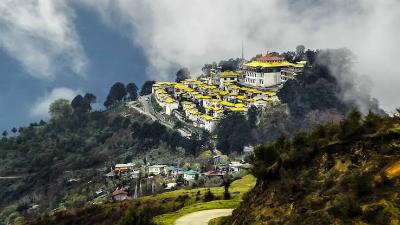Which Side Of Meghalaya Is More Beautiful?
When it comes to natural beauty, few places can compare to Meghalaya in Northeast India. Known as the "abode of clouds," this stunning state is blessed with lush green landscapes, breathtaking waterfalls, and mesmerizing caves. However, Meghalaya is divided into two distinct regions – the Khasi Hills and the Jaintia Hills. Each region boasts its own unique charm and attractions. So, which side of Meghalaya is more beautiful? Let's delve into the beauty of both regions and find out.
The Allure of Khasi Hills
The Khasi Hills, located in the eastern part of Meghalaya, is home to the state's capital city, Shillong. This hill station is known for its pleasant climate, charming colonial architecture, and sprawling golf courses. But it's the natural beauty of the Khasi Hills that truly captivates visitors.
One of the highlights of the Khasi Hills is Cherrapunji, one of the wettest places on Earth. Here, travelers are greeted with cascading waterfalls, including the iconic Nohkalikai Falls, which is the tallest plunge waterfall in India. The Mawsmai Caves also offer a thrilling adventure, with its intricate limestone formations and underground passages. And for those seeking tranquility, the village of Mawlynnong, known as Asia's cleanest village, is a must-visit.
Another major attraction in the Khasi Hills is the living root bridges of Meghalaya. These fascinating structures are made by training the roots of rubber trees to grow across riverbanks, forming sturdy and unique bridges. The double-decker root bridge in Nongriat village is a sight to behold and can only be reached after a steep hike through the dense rainforest.
The Delights of Jaintia Hills
On the other side of Meghalaya lies the Jaintia Hills, which is less explored but equally captivating. The region is named after the Jaintia tribe and is known for its thick forests, sparkling rivers, and intriguing caves.
The Jaintia Hills are home to the unique attractions of Dawki and Krang Suri Falls. Dawki is famous for its crystal-clear Umngot River, which provides a surreal experience of boating on transparent waters. The river also forms a natural border between India and Bangladesh. Krang Suri Falls, located near the town of Amlarem, offers a serene and picturesque setting for swimming and picnicking.
Exploring the Jaintia Hills wouldn't be complete without a visit to the enchanting caves of Jowai. The Krem Liat Prah cave is the longest sandstone cave in the world and is a treasure trove for adventure enthusiasts. The Krem Mawmluh cave system is another must-visit, with its intricate formations and underground waterfalls.
The Verdict
Choosing between the beauty of the Khasi Hills and the Jaintia Hills is a difficult task. Both regions have their own unique attractions and charm. The Khasi Hills captivate with its stunning waterfalls, living root bridges, and the charming hill station of Shillong. On the other hand, the Jaintia Hills offer a more off-the-beaten-path experience with its crystal-clear rivers, enchanting caves, and lesser-known destinations.
Ultimately, the choice between the two sides of Meghalaya depends on individual preferences. If you prefer a mix of natural wonders and urban comforts, the Khasi Hills with Shillong as the base is a great choice. But if you seek a more adventurous and untouched experience, the Jaintia Hills will provide you with the solitude and serenity you crave.
In conclusion
Whichever side of Meghalaya you choose, you are sure to be spellbound by the state's natural beauty. From majestic waterfalls to mystical caves, Meghalaya offers a unique and unforgettable experience. So pack your bags, experience the beauty of both the Khasi Hills and the Jaintia Hills, and discover why Meghalaya truly is a traveler's paradise.
Don't forget to share this blog post with fellow travel enthusiasts and let them decide which side of Meghalaya they find more beautiful!
Disclaimer : The information provided in this blog is for general informational purposes only. While we strive to keep the content accurate and updated, TravelSetu assumes no liability for errors or omissions. If you believe any part of this blog infringes your rights or causes concern, please notify us immediately at info[at]travelsetu[dot]com so that appropriate action can be taken.



